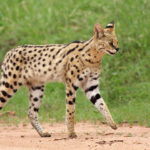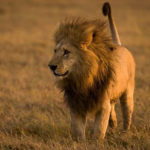Interesting facts about big cats
 Big cats are like small, only big. Despite the obvious differences, a furry cat humming in your lap is really a close relative of such formidable predators as, for example, a tiger or a lion. Even behavior in the wild in representatives of these different species is very similar – they all have a proud character, a tendency to loneliness, cunning and ingenuity.
Big cats are like small, only big. Despite the obvious differences, a furry cat humming in your lap is really a close relative of such formidable predators as, for example, a tiger or a lion. Even behavior in the wild in representatives of these different species is very similar – they all have a proud character, a tendency to loneliness, cunning and ingenuity.
The biggest big cat on earth is a liger named Hercules, a hybrid of a tiger and a lion.
The most rare species of large cats on earth is the Amur tiger, which stands on the verge of extinction.
The US zoos contain more tigers than they live in the rest of the world.
A case is known when a male tiger left kittens of an ordinary cat, left without a mother.
An animal like the “panther” does not exist. Panthers are commonly referred to as leopards, pumas and jaguars with black color.
Inhabitants in Africa, ostriches may well kill the attacking lion with the blow of their powerful leg. True, in most cases they still prefer to escape.
Caracal, or desert lynx, long ago were domesticated by the Arabs. Nowadays, some people keep their homes – the caracals are easy to tame.
The fastest land creature on earth is a cheetah, able to develop a speed of 112 km / h in three seconds, which is comparable to a racing car. True, such a frantic spurt exhausts the beast, and it can only maintain such a pace for 20-30 seconds. Usually, if the first attack failed, the cheetah stops much earlier, saving energy, and goes in search of another prey.
Ancient Egyptians used to hunt cheetahs just as in the Middle Ages hunters used beagle dogs.
Snow leopards do not know how to growl or purr.
Working in the Indian tiger reserve in Bengal, people wear masks depicting a human face on the back of the head. This helps to avoid them attacking tigers who attack only from the back.
After the last ice age, almost all cheetahs died out. Those that exist now have come from a very small group of surviving cheetahs, which is why they are practically copies of each other from a genetic point of view.
The lion’s claws can reach seven centimeters in length. This is about half the length of the tooth of an extinct predator of antiquity – tyrannosaurus.
Lions and tigers can interbreed, however, this happens very rarely, and the offspring of such connections are born sterile and can not reproduce. Moreover, from a male lion and a female tigress, a huge liger is obtained, and from a male tiger and a female lion, a relatively small tiger.
On average, lions sleep about twenty hours a day.
Pupils in tigers are not vertical, as in domestic cats, but round as in humans, because cats are night predators, and tigers prefer to hunt in the twilight.
All white tigers are blue-eyed.
When the lions drive the prey, the male is the first to eat. And when a group of tigers hunt, males usually skip ahead of the females and cubs, waiting for their turn.
In the case of chasing her, the cougar usually looks for shelter in the trees.
With the help of growl, the tigers communicate, and not intimidated. A sign of an early attack of a tiger is hissing and snorting.
The cubs of the pumas are very clever – they will never leave the hiding place until their mother calls them.
All tigers have absolutely unique voices, although this can not be distinguished even for the human ear without ancillary devices.
The tiger, though inferior to the cheetah in speed, develops speeds of up to 60 km / h, rushing to prey from ambush.
Puma can jump to a height of up to four or five meters.
Being a relatively small animal, the puma eats more than a ton of meat per year.



























